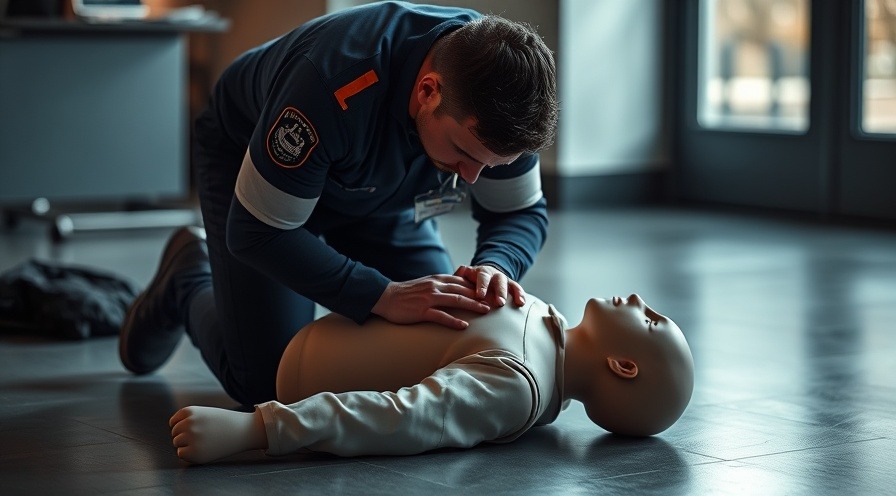
Understanding Cardiac Arrest: The Urgency of Bystander Action
Cardiac arrest occurs when the heart stops beating unexpectedly, leading to loss of consciousness and breathing. It is a life-threatening emergency that requires immediate action. According to recent studies, the chances of surviving a cardiac arrest significantly increase if bystanders take swift action, such as calling 911 and starting CPR immediately. Despite this knowledge, many people feel uncertain or unprepared to act in these critical situations.
The Lifesaving Impact of CPR
Survival rates for cardiac arrest vary dramatically depending on the speed of intervention. While professional help from emergency responders is crucial, studies have shown that bystander-initiated CPR can double or even triple a victim's chances of survival. Bystanders who initiate CPR while waiting for medical personnel can keep the blood flowing to vital organs, buying precious time until help arrives.
Addressing the Knowledge Gap
Despite the clear advantages of taking immediate action, a substantial portion of the population lacks the confidence or knowledge to perform CPR. A survey revealed that many individuals believe CPR is too complicated or that they might harm the victim if they attempt it. This misunderstanding can lead to inaction during a crisis. Education and awareness campaigns play a critical role in dispelling myths about CPR and emphasizing its importance in saving lives.
Overcoming Fear: Simple Techniques to Learn
Learning CPR and the use of an Automated External Defibrillator (AED) is easier than many might think. Community organizations and health facilities often provide free or low-cost courses tailored to individuals without a medical background. In just a few hours, participants can gain the skills needed to respond effectively in emergencies.
Relevance in Everyday Life: Realizations from Recent Incidents
Real-life events underscore the importance of bystander CPR. For instance, the recent incident involving a high school athlete who collapsed during a game illustrates that anyone can face such scenarios. Witnesses who were trained in CPR acted quickly, contributing to the athlete’s recovery. This incident highlights that while we cannot predict when emergencies will occur, being prepared can make all the difference.
Future Predictions: Technology’s Role in Bystander Response
As we look to the future, technology will continue to play a pivotal role in enhancing bystander intervention. Advances in mobile applications that alert trained individuals to cardiac emergencies nearby, or devices that provide real-time CPR guidance through voice prompts, could significantly improve response times. This technological evolution is essential to increasing survival rates and fostering a culture of readiness.
The Emotional and Human Impact of Acting Fast
It’s important to remember that behind the statistics and data are real people and families affected by cardiac arrest. The emotional weight of acting—or failing to act—can linger long after the event. Empowering bystanders through education transforms them into vital links in the chain of survival.
Final Thoughts: Take the Initiative
In light of the information presented, it’s clear that every moment counts during a cardiac arrest. The decision to act can save a life, and knowledge is the key that can unlock the potential for courage in dire situations. Individuals are encouraged to seek out CPR training opportunities, educate themselves and their loved ones on emergency response procedures, and foster a community culture where everyone feels empowered to act.
 Add Row
Add Row  Add
Add 




 Add Row
Add Row  Add
Add 

Write A Comment